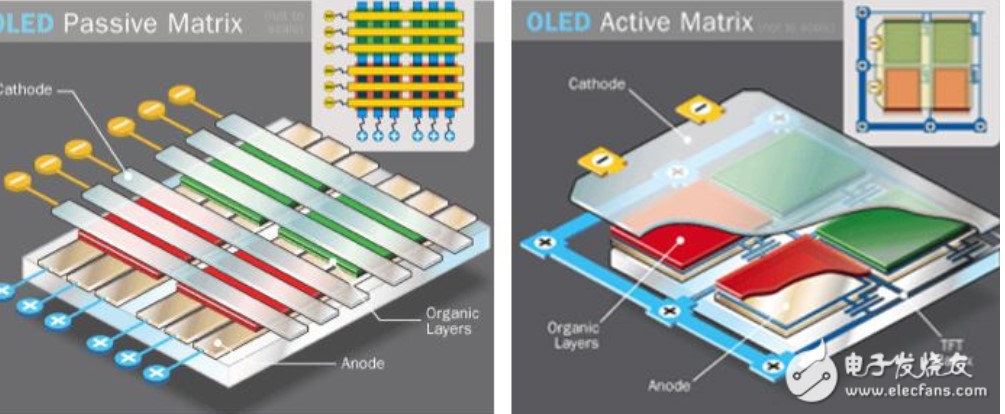OLED:
organic light-emitting diode (OLED or organic LED), also known as organic electroluminescent (organic EL) diode, is a light-emitting diode (LED) in which the emissive electroluminescent layer is a film of organic compound that emits light in response to an electric current. This organic layer is situated between two electrodes; typically, at least one of these electrodes is transparent. OLEDs are used to create digital displays in devices such as television screens, computer monitors, portable systems such as smartphones, handheld game consoles and PDAs. A major area of research is the development of white OLED devices for use in solid-state lighting applications.
AMOLED:
AMOLED
The AMOLED core is still in. Although LED is also common in daily life, in the screen, each LED is very small in size, and is divided into three sub-pixel groups of red and green blue, and then form different colors, and the arrangement of sub-pixel will affect the whole display effect. In AMOLED, O represents organic, that is, organic. In short, a series of organic thin film materials are used between the positive and negative poles to achieve the purpose of luminescence.
Am represents active matrix, which is relative to passive matrix, and refers to the driving mode of each OLED pixel. In passive matrix, the control of each pixel is realized by a complex electrode network, so as to realize the charge and discharge of a pixel. Generally speaking, the control mode of passive matrix is relatively slow and the control accuracy is slightly lower. Unlike passive matrix, active matrix adds TFT and capacitance layer to each LED. When a row of pixels are electrified and activated, the capacitor layer in the pixel can keep charging state between two refreshes, thus realizing faster and more accurate pixel light-emitting control.
The difference between OLED and AMOLED.
AMOLED belongs to OLED, but not vice versa. In short, OLED technology includes PMOLED and AMOLED. PMOLED does not need TFT backplane (different from LCD backplane), but its size can not be very large; AMOLED can be very large. PMOLED mainly exists in the early dual screen mobile phone, used for small external screen, the current mobile TV use AMOLED technology.
OLED is organic light-emitting diodes. Its light-emitting material is organic light-emitting material, which is relative to LED light-emitting diodes. OLED will emit light as long as the right voltage is applied to the positive and negative poles. It is the same as an electric light bulb. Add a signal to it and it will work.
AMOLED is an active organic light-emitting diode. It not only needs to add signal, but also needs to supply additional point source to make the diode reach the working state. At this time, it will turn on or off when it gives a signal of on or off. For example, it works like a TV. You can't watch it when you connect it with a cable signal. You can only watch it when you give it electricity. But only electricity, not cable signal, there is no program to watch.
In terms of structure, OLED is basically a diode, AMOLED is a transistor or multiple triodes jointly driving a light-emitting point.

Contact: Charles Huang
Phone: 86 15692172948
Tel: 86 15692172948
Company: Hyltronics
Add: Room 1696, floor 1, building 2, No. 1858, Jinchang Road, Putuo District, Shanghai